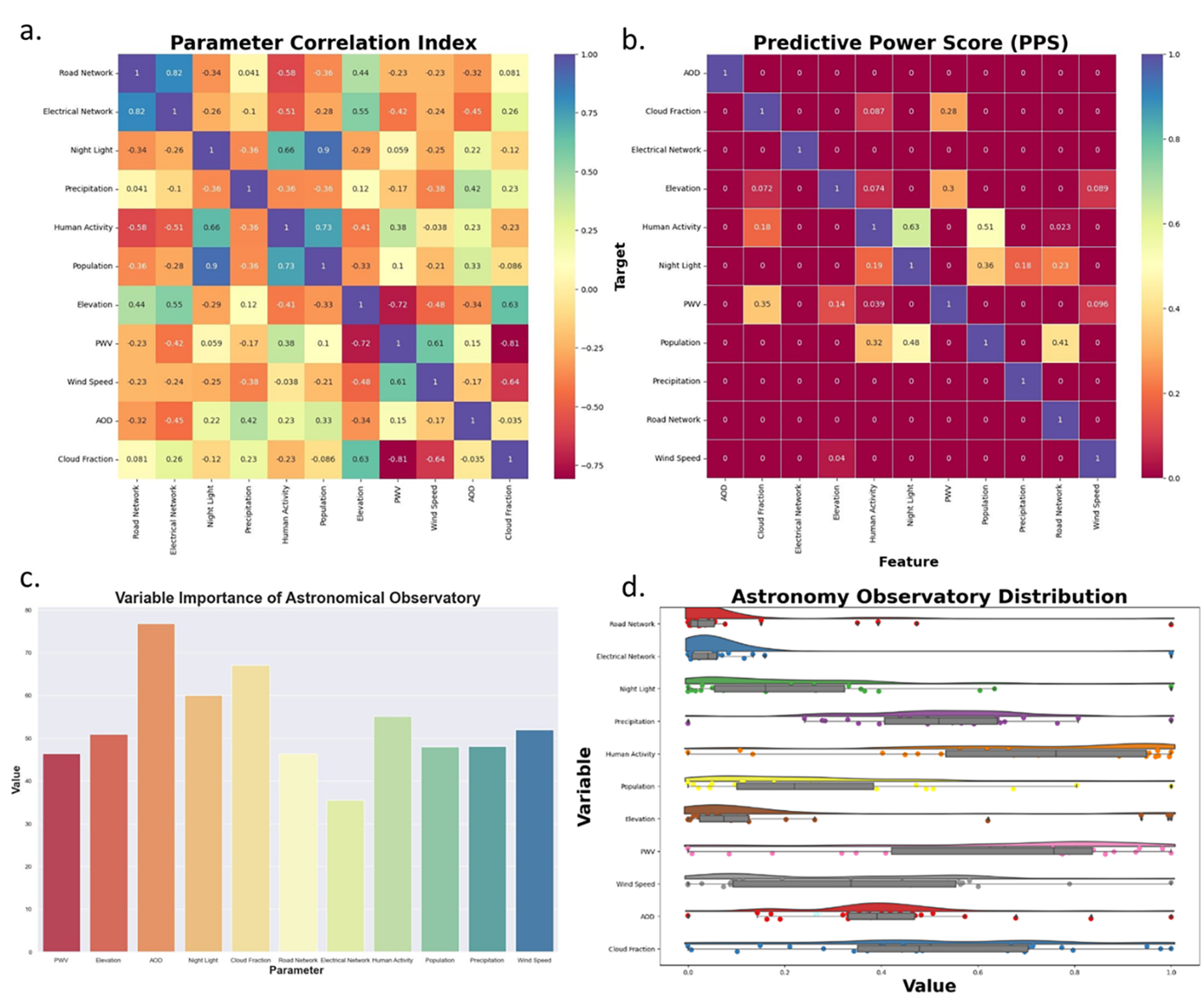Anjar Dimara Sakti
,
Muhammad Rizky Zakiar
,
Cokro Santoso
,
Nila Armelia Windasari
,
Anton Timur Jaelani
,
Seny Damayanti
,
Tania Septi Anggraini
,
Anissa Dicky Putri
,
Delik Hudalah
,
Albertus Deliar
Oktober 2023

Astronomical observatory construction plays an essential role in astronomy research, education, and tourism development worldwide. This study develops siting distribution scenarios for astronomical observatory locations in Indonesia using a suitability analysis by integrating the physical and atmospheric observatory suitability indexes, machine learning models, and long-term climate models. Subsequently, potential sites are equalized based on longitude and latitude zonal divisions considering air pollution disturbance risks. The study novelty comes from the integrated model development of physical and socio-economic factors, dynamic spatiotemporal analysis of atmospheric factors, and the consideration of equitable low air-pollution-disturbance-risk distribution in optimal country-level observatory construction scenarios. Generally, Indonesia comprises high suitability index and low multi-source air pollution risk areas, although some area has high astronomical suitability and high–medium air pollution risk. Most of Java, the east coast of Sumatra, and the west and south coasts of Kalimantan demonstrate "low astronomical suitability–high air pollution risk.” A total of eighteen locations are recommended for new observatories, of which five, one, three, four, two, and three are on Sumatra, Java, Kalimantan, Nusa Tenggara, Sulawesi, and Papua, respectively. This study provides a comprehensive approach to determine the optimal observatory construction site to optimize the potential of astronomical activities.
| Jenis |
Artikel Jurnal |
| Publikasi |
PLOS ONE |
